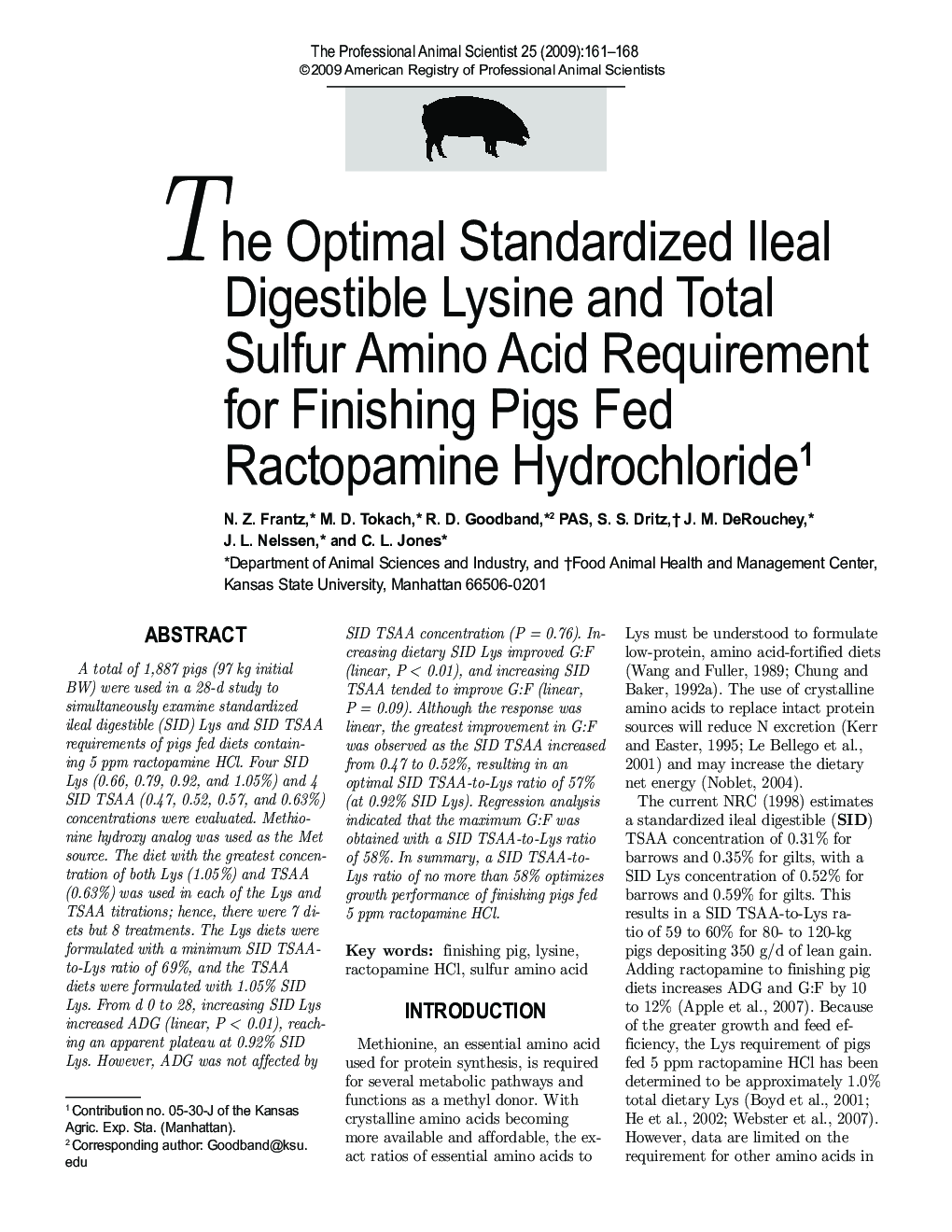| Article ID | Journal | Published Year | Pages | File Type |
|---|---|---|---|---|
| 2454484 | The Professional Animal Scientist | 2009 | 8 Pages |
Abstract
A total of 1,887 pigs (97 kg initial BW) were used in a 28-d study to simultaneously examine standardized ileal digestible (SID) Lys and SID TSAA requirements of pigs fed diets containing 5 ppm ractopamine HCl. Four SID Lys (0.66, 0.79, 0.92, and 1.05%) and 4 SID TSAA (0.47, 0.52, 0.57, and 0.63%) concentrations were evaluated. Methionine hydroxy analog was used as the Met source. The diet with the greatest concentration of both Lys (1.05%) and TSAA (0.63%) was used in each of the Lys and TSAA titrations; hence, there were 7 diets but 8 treatments. The Lys diets were formulated with a minimum SID TSAA-to-Lys ratio of 69%, and the TSAA diets were formulated with 1.05% SID Lys. From d 0 to 28, increasing SID Lys increased ADG (linear, P < 0.01), reaching an apparent plateau at 0.92% SID Lys. However, ADG was not affected by SID TSAA concentration (P = 0.76). Increasing dietary SID Lys improved G:F (linear, P < 0.01), and increasing SID TSAA tended to improve G:F (linear, P = 0.09). Although the response was linear, the greatest improvement in G:F was observed as the SID TSAA increased from 0.47 to 0.52%, resulting in an optimal SID TSAA-to-Lys ratio of 57% (at 0.92% SID Lys). Regression analysis indicated that the maximum G:F was obtained with a SID TSAA-to-Lys ratio of 58%. In summary, a SID TSAA-to-Lys ratio of no more than 58% optimizes growth performance of finishing pigs fed 5 ppm ractopamine HCl.
Keywords
Related Topics
Life Sciences
Agricultural and Biological Sciences
Animal Science and Zoology
Authors
N.Z. Frantz, M.D. Tokach, R.D. PAS, S.S. Dritz, J.M. DeRouchey, J.L. Nelssen, C.L. Jones,
